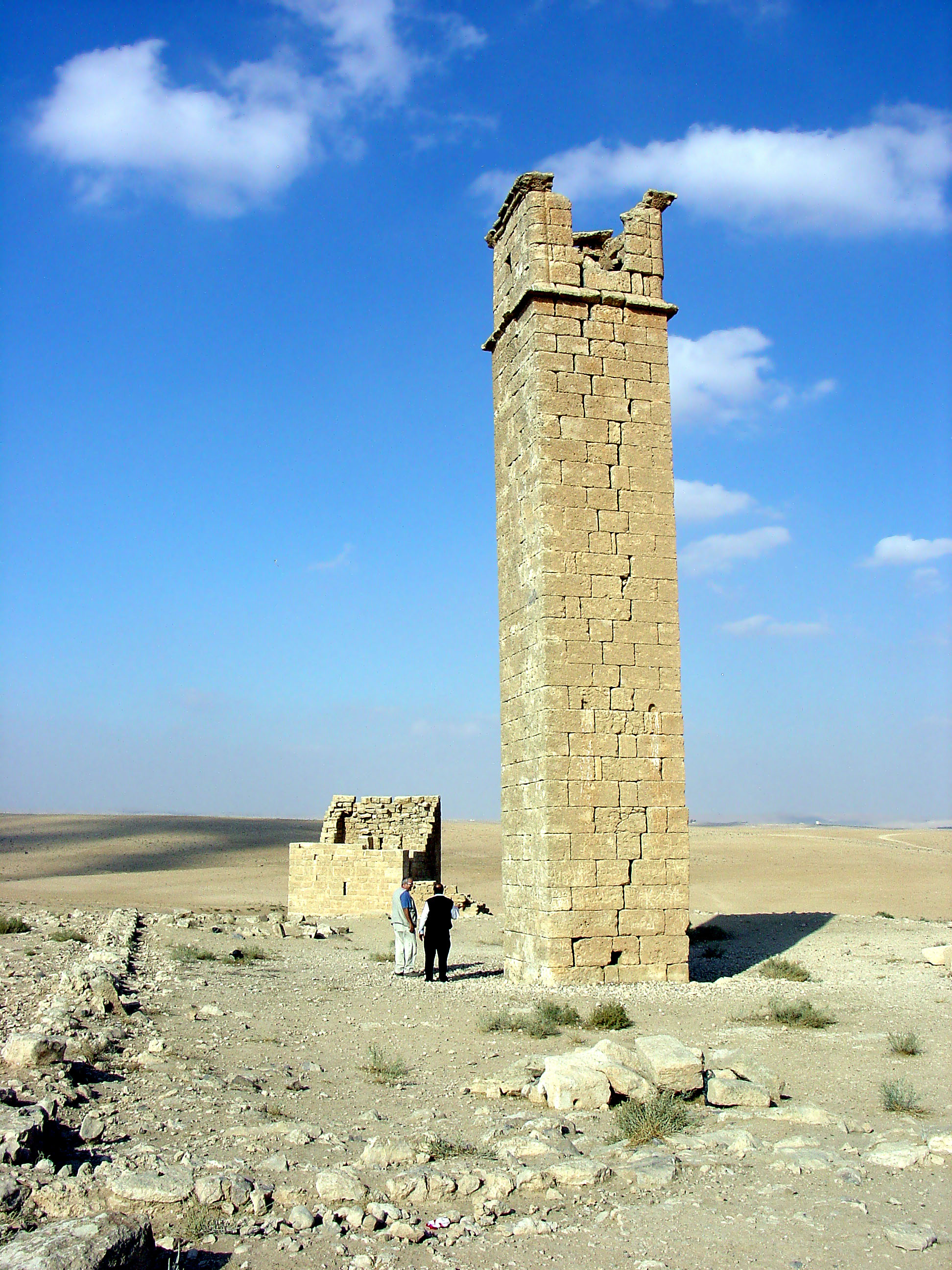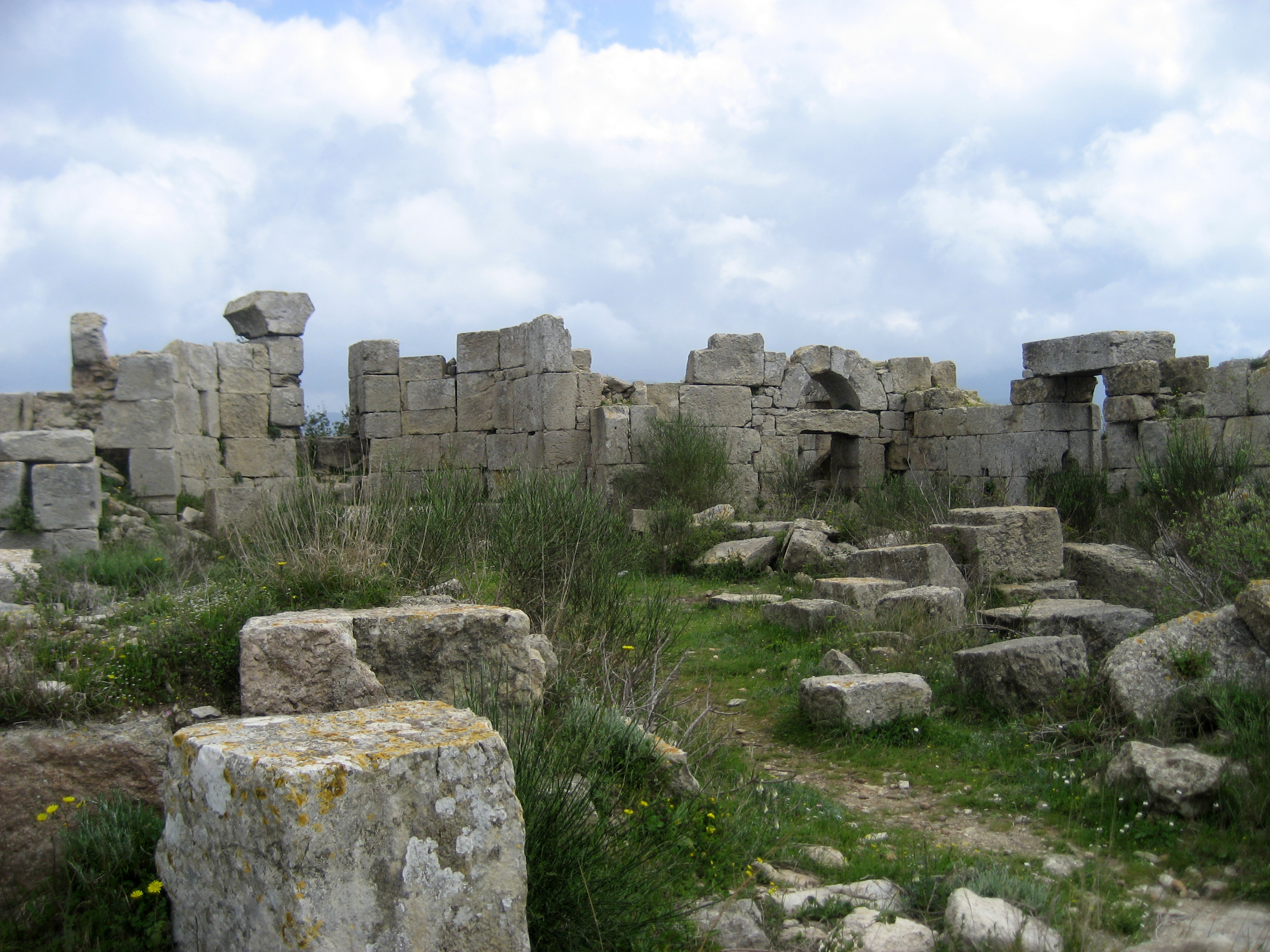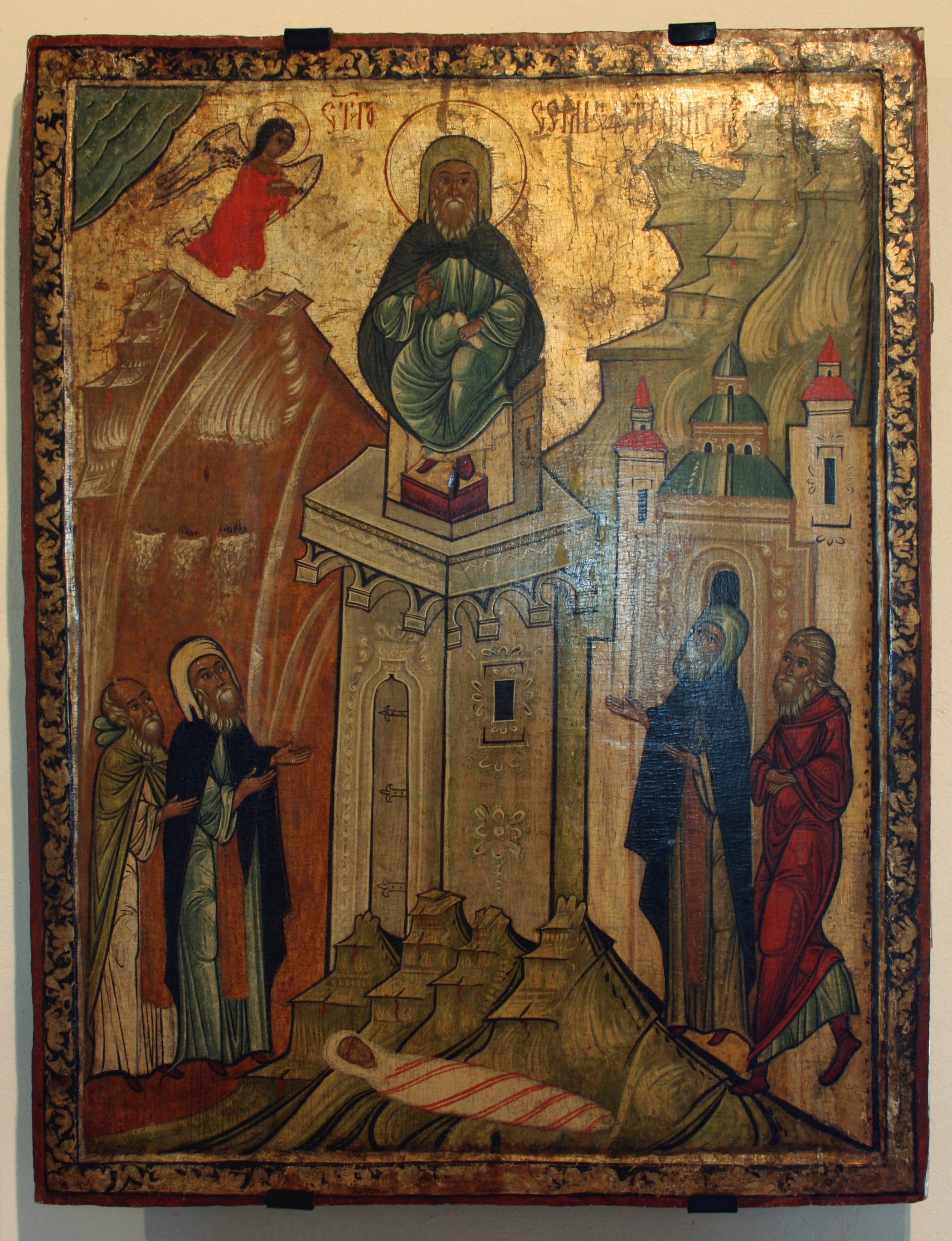|
Mor Loʿozor Monastery
The Mor Loʿozor Monastery was a Syriac Orthodox monastery in the vicinity of Mercimekli, the ancient ''Habsenas'', in the Tur Abdin. History The monastery was named after Mor Lazarus the Edessan, who was an ascetic and bishop of Harran in the fourth century. There are two conflicting narratives regarding its foundation. According to the first, the monastery was founded by Mor Lazarus, who was at the time the bishop of Harran, while according to the second, it was founded by Mor Shemʿun d-Zaite ( Simeon of the Olives), who translated the bones of Mor Lazarus into the monastery. It is also possible that Shemʿun refounded the monastery during his time as bishop (between 700 and 734). The oldest parts of the monastery may go back to the 5th or 6th century. The monastery was located only around 300 meters from the village of Habsenas, indicating the close relation between the villagers and the monastery. The monastery seems to have continued stylite practices in the eight century, ... [...More Info...] [...Related Items...] OR: [Wikipedia] [Google] [Baidu] |
Syriac Orthodox
The Syriac Orthodox Church (), also informally known as the Jacobite Church, is an Oriental Orthodox denomination that originates from the Church of Antioch. The church currently has around 4-5 million followers. The church upholds the Miaphysite doctrine in Christology and employs the Liturgy of Saint James, associated with James the Just. Classical Syriac is the official and liturgical language of the church. The supreme head of the Syriac Orthodox Church is the patriarch of Antioch, a bishop who, according to sacred tradition, continues the leadership passed down from Saint Peter. Since 2014, Ignatius Aphrem II has served as the Syriac Orthodox Antiochian patriarch. The Great Church of Antioch was the patriarchal seat and the headquarters of the church until , after which Severus of Antioch had to flee to Alexandria, Egypt. After the death of Severus, the patriarchal seat moved from Egypt to different monasteries like the Mor Bar Sauma Monastery; some patriarc ... [...More Info...] [...Related Items...] OR: [Wikipedia] [Google] [Baidu] |
Mardin
Mardin (; ; romanized: ''Mārdīn''; ; ) is a city and seat of the Artuklu District of Mardin Province in Turkey. It is known for the Artuqids, Artuqid architecture of its old city, and for its strategic location on a rocky hill near the Tigris River. The old town of the city is under the protection of UNESCO, which forbids new constructions to preserve its façade. The city had a population of 129,864 in 2021. The population is a mix of Kurds, Arabs, Mhallami, and Assyrian people, Assyrians. History Antiquity and etymology A legal document from Neo-Assyrian period has one mention of a road leading to Mardiānê - which is believed to be modern-day Mardin - indicating that the name has roots dating back to at least the Neo-Assyrian period. The city survived into the Syriac Christian period as the name of Mount Izla on which in the early 4th century stood the monastery of Nisibis, housing seventy monks. In the Roman period, the city itself was known as ''Marida'' (''Merid ... [...More Info...] [...Related Items...] OR: [Wikipedia] [Google] [Baidu] |
Turkey
Turkey, officially the Republic of Türkiye, is a country mainly located in Anatolia in West Asia, with a relatively small part called East Thrace in Southeast Europe. It borders the Black Sea to the north; Georgia (country), Georgia, Armenia, Azerbaijan, and Iran to the east; Iraq, Syria, and the Mediterranean Sea to the south; and the Aegean Sea, Greece, and Bulgaria to the west. Turkey is home to over 85 million people; most are ethnic Turkish people, Turks, while ethnic Kurds in Turkey, Kurds are the Minorities in Turkey, largest ethnic minority. Officially Secularism in Turkey, a secular state, Turkey has Islam in Turkey, a Muslim-majority population. Ankara is Turkey's capital and second-largest city. Istanbul is its largest city and economic center. Other major cities include İzmir, Bursa, and Antalya. First inhabited by modern humans during the Late Paleolithic, present-day Turkey was home to List of ancient peoples of Anatolia, various ancient peoples. The Hattians ... [...More Info...] [...Related Items...] OR: [Wikipedia] [Google] [Baidu] |
Syriac Orthodox Church
The Syriac Orthodox Church (), also informally known as the Jacobite Church, is an Oriental Orthodox Christian denomination, denomination that originates from the Church of Antioch. The church currently has around 4-5 million followers. The church upholds the Miaphysitism, Miaphysite doctrine in Christology and employs the Liturgy of Saint James, associated with James, brother of Jesus, James the Just. Classical Syriac is the official and liturgical language of the church. The supreme head of the Syriac Orthodox Church is the patriarch of Antioch, a bishop who, according to sacred tradition, continues the leadership passed down from Saint Peter. Since 2014, Ignatius Aphrem II has served as the Syriac Orthodox Patriarch of Antioch and All the East, Syriac Orthodox Antiochian patriarch. The Domus Aurea (Antioch), Great Church of Antioch was the patriarchal seat and the headquarters of the church until , after which Severus of Antioch had to flee to Alexandria, Egypt. After the de ... [...More Info...] [...Related Items...] OR: [Wikipedia] [Google] [Baidu] |
Mercimekli, Midyat
Mercimekli (; ; ) is a neighbourhood in the municipality and district of Midyat, Mardin Province in Turkey. The village is populated by Syriacs, Zaza Kurds, and Mhallami and had a population of 304 in 2021. It is located in the historic region of Bēth Muḥallam in Tur Abdin. In the village, there is the Church of Mar Shim’un. History The Church of Mar Shim’un at Habsnas (today called Mercimekli) was built at the beginning of the sixth century or shortly afterwards. The village is mentioned in the ''Life'' of Mar Gabriel of Beth Qustan (593—667). Simeon of the Olives (), metropolitan bishop of Harran, was born at Habsnas in 657 AD and renovated its church, founded a school at the village, and established the nearby Mor Loʿozor Monastery. The monk Ayyub (Job) of Manim’am, who wrote the '' vita'' of Mar Shim’un Zaytuni at the end of the ninth century or the beginning of the tenth century, may have been educated at the school at Habsnas. The monk Habib of Habsnas ... [...More Info...] [...Related Items...] OR: [Wikipedia] [Google] [Baidu] |
Tur Abdin
Tur Abdin (; ; ; or ) is a hilly region situated in southeast Turkey, including the eastern half of the Mardin Province, and Şırnak Province west of the Tigris, on the Syria–Turkey border, border with Syria and famed since Late Antiquity for its Christian monasteries on the border of the Roman Empire and the Sasanian Empire. The area is a low plateau in the Anti-Taurus Mountains stretching from Mardin in the west to the Tigris in the east and delimited by the Mesopotamia, Mesopotamian plains to the south. The Tur Abdin is populated by more than 80 villages and nearly 70 monastery buildings and was mostly Syriac Orthodox Church, Syriac Orthodox until the early 20th century. The earliest surviving Christian buildings date from the 6th century. The name "Tur Abdin" is . Tur Abdin is of great importance to the Syriac Orthodox Church, Syriac Orthodox, for whom the region used to be a monastic and cultural heartland. The Assyrian people, Assyrian community of Tur Abdin call themsel ... [...More Info...] [...Related Items...] OR: [Wikipedia] [Google] [Baidu] |
Harran
Harran is a municipality and Districts of Turkey, district of Şanlıurfa Province, Turkey. Its area is 904 km2, and its population is 96,072 (2022). It is approximately southeast of Urfa and from the Syrian border crossing at Akçakale. Harran was founded at some point between the 25th and 20th centuries BC, possibly as a merchant colony by Sumerian traders from Ur. Over the course of its early history, Harran rapidly grew into a major Mesopotamian cultural, commercial and religious center. It was made a religiously and politically influential city through its association with the moon-god Sin (mythology), Sin; many prominent Mesopotamian rulers consulted with and renovated the moon-temple of Ekhulkhul in Harran. Harran came under Assyrian rule under Adad-nirari I ( BC) and became a provincial capital often second in importance only to the Assyrian capital of Assur itself. During the collapse of the Assyrian Empire, Harran briefly served as the final capital of ... [...More Info...] [...Related Items...] OR: [Wikipedia] [Google] [Baidu] |
Simeon Of The Olives
Simeon of the Olives (''Shimʿun Zaytuni'', 624–734) was a Syriac Orthodox bishop of Harran from Ḥabsenus in the eight century. He is attributed to have built or rebuilt several churches and monasteries in the region around Nisibis, such as the Mor Loʿozor Monastery. Biography According to his vita, Simeon was born in the village of Ḥabsenus in the Tur Abdin in 624/5, though others date his birth later to 657. He first learned how to read and write at his village church and was then sent to the monastic school at the Qartmin Abbey at the age of ten. At the age of fifteen he became a monk and at twenty-five, a priest. While still a youth, he was trampled to death at the feast of Mor Gabriel (possibly Gabriel's funeral) and miraculously revived upon being placed on the saint's tomb. Simeon also lived as a stylite for some time in the Monastery of the Column in Sīrwān close to Nisibis and finally became abbot of the Qartmin Abbey. At some point, his nephew David came up ... [...More Info...] [...Related Items...] OR: [Wikipedia] [Google] [Baidu] |
Stylite
A stylite ( () "pillar dweller", derived from () "pillar" and ()) or pillar-saint is a type of Christian ascetic who lives on pillars, preaching, fasting and praying. Stylites believe that the mortification of their bodies would help ensure the salvation of their souls. Stylites were common in the early days of the Byzantine Empire. The first known stylite was Simeon Stylites the Elder who climbed a pillar in Syria in 423 CE and remained there until his death 36 years later. Ascetic precedents Palladius of Galatia tells of Elpidius, a hermit from Cappadocia who dwelt in a mountaintop cave outside of Jericho for 25 years until his death, eating only on Saturdays and Sundays and standing up worshiping throughout the night. St. Gregory of Nazianzus speaks of a solitary who stood upright for many years together, absorbed in contemplation, without ever lying down. Theodoret claimed that he had seen a hermit who had passed ten years in a tub suspended in midair from poles. ... [...More Info...] [...Related Items...] OR: [Wikipedia] [Google] [Baidu] |
Simeon The Younger
Simeon Stylites the Younger, also known as Simeon of the Admirable Mountain (, Arabic: مار سمعان العمودي الأصغر ''mār semʻān l-ʻamūdī l-asghar''; 521 – 596/597), is a saint in the Catholic Church and Eastern Orthodox Church. Life Stylites were solitaries who, taking up their abode upon the tops of a pillar (stylos), chose to spend their days amid the restraints thus entailed and in the exercise of other forms of asceticism.Thurston, Herbert; "Stylites (Pillar Saints)", The Catholic Encyclopedia Vol. 14, New York: Robert Appleton Company, 1912, 9 December 2021 Simeon was born at in 521. His father, John, was a native of |
Monastery Of Saint Simeon Stylites The Younger
The Monastery of Saint Simeon Stylites the Younger () is a former Christian monastery that lies on a hill roughly southwest of Antakya and to the east of Samandağ, in the southernmost Turkish province of Hatay. The site is extensive but the monastery buildings are in ruins. The monastery sits on top of a hill called ''Saman Dağı'' (summit elevation: ). History The monastery commemorates the " pillar saint", Simeon Stylites the Younger (521–597) and marks the last of several pillars atop which he lived his life. According to one version, he lived on, and preached from, this pillar for the final 45 years of his long life. Miraculous healing was attributed to him, and he was venerated as a saint even while he was still alive. The area was a pilgrimage destination until the thirteenth century. Ibn Butlan said of the monastery in the mid of the 11th century that its buildings occupied an area as large as half of Baghdad. The monastery was sacked in 1084 during the conquest of ... [...More Info...] [...Related Items...] OR: [Wikipedia] [Google] [Baidu] |
Simeon Stylites
Simeon Stylites or Symeon the Stylite ', Koine Greek ', ' (Greek language, Greek: Συμεών ό Στυλίτης; ; 2 September 459) was a Syrian Asceticism#Christianity, Christian ascetic, who achieved notability by living 36 years on a small platform on top of a pillar near Aleppo (in modern Syria). Several other stylites later followed his model (the Greek language, Greek word ''style'' means "pillar"). Simeon is venerated as a saint by the Eastern Catholic Churches, Oriental Orthodox Churches, Eastern Orthodox Church, and Roman Catholic Church. He is known formally as Simeon Stylites the Elder to distinguish him from Simeon Stylites the Younger, Simeon Stylites III and Symeon Stylites of Lesbos. Sources There exist three major early biographies of Simeon. The first of these is by Theodoret, bishop of Cyrrhus, and is found within his work ''Religious History''. This biography was written during Simeon's lifetime, and Theodoret relates several events of which he claims ... [...More Info...] [...Related Items...] OR: [Wikipedia] [Google] [Baidu] |





